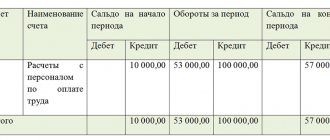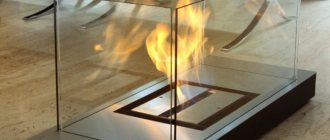Entrepreneurs who decide to create a reliable and risk-free project may be interested in how to open a brick factory. It is enough to draw up a business plan with calculations, set up all work processes and expect stable profits on an ongoing basis.
The profitability of such a project is quite high. And, despite the fact that the business will require large capital investments, they can be returned in full after 1.5-2 years of active activity. Further, with an established production process and distribution channels, we can talk about the owner’s constantly growing profits.
Advantages
The beauty of such production is that bricks are always required by local residents, neighbors of country houses. Customers will purchase the product in small packages to use in home construction and minor repairs. There will be no need to provide and pay for long-distance transportation, which will reduce costs. Consequently, the products will cost customers less. Land owners almost always have a need for minor construction and repair work, and bricks are the most common material. It has continued to be used for many centuries.
Financial plan
Let's give a calculation based on one of the easiest bricks to make - concrete brick. For a relatively small production, you can take a semi-automatic vibration press of medium productivity. As an example, the business plan uses a brick making machine from. Additionally, it must be equipped with a forced-action concrete mixer. The chosen tax system of the simplified tax system is “income minus expenses”.
Start-up costs
When renting premises, starting costs without purchasing consumables will be:
| Name | Cost, rubles |
| Rent of premises 300 m2 | 50000 |
| Repair and installation/commissioning of equipment | 200000 |
| Vibropress Meteor-ZM | 450000 |
| Concrete mixer | 234000 |
| Total | 884000 |
The basic configuration of the brick making press includes one brick matrix of your choice. Additional ones can be purchased for an average of 65,000 rubles apiece. The business plan does not take into account the expansion of the product catalog.
Monthly expenses
Using a standard five-day work schedule, for the smooth operation of the enterprise, 3 employees will be required: a technologist, a general worker, and a delivery driver. Accordingly, the wage fund will be:
| Job title | Salary | Quantity | Payroll |
| Technologist | 30000 | 1 | 30000 |
| Handyman | 20000 | 1 | 40000 |
| Driver | 30000 | 1 | 30000 |
| Total | 100000 |
Another expense item is consumables. The declared productivity of the selected vibrating machine is 1200 bricks in 8 hours. For the M130 brand, this volume will require:
| Materials | Average price, rubles per ton | Consumption per day, tons | Cost, rubles |
| Cement | 4400 | 0,6 | 2640 |
| Sand | 300 | 4 | 1200 |
| Total | 3640 |
Accordingly, to maintain 22 working days per month and produce 26,400 bricks it will be spent:
| Name | Amount, rubles |
| Renting premises | 30000 |
| Payroll | 100000 |
| Communal payments | 15000 |
| Monthly supply of raw materials | 80000 |
| 15000 | |
| Unexpected expenses | 20000 |
| Total | 260000 |
Profit
If sales represent 100% of production and there are no unforeseen delays in brick production, then estimated revenue will be:
| Production of bricks, pcs. | 26400 |
| Current expenses | 260000 |
| Cost of 1 piece, rubles | 10 |
| Average market price, rubles | 15 |
| Income per month, rubles | 396000 |
| Profit before tax, rubles | 136000 |
| Tax (USN 15%) | 20400 |
| Net profit, rubles | 115400 |
Accordingly, the enterprise will roughly pay for itself in 8 months. Considering that almost 40% of the expense is payroll, then with the personal participation of the entrepreneur in production, it is reduced. However, taking into account seasonal sales declines and the time required to create a customer base, the real payback period is about 1.5 years.
Rate this page: 2 ratings, average: 4.50
- #: Business for men
- Production
- Construction materials
Production stages
Before you make bricks in your small factory, you need to check whether there is a similar production in the area. If not, the business will pay off fairly quickly. The quality of the products will affect the timing. After all, if it is high, consumers will, on the principle of word of mouth, provide advertising to the production, recommending such bricks to everyone.
Brick production always begins with the preparation of raw materials. In order for the product to be of high quality, it is necessary to select source materials with special care. The clay is cleared of impurities, crushed, and then mixed with water in a mixer. Afterwards the product is transported to the extruder. Cutting mechanisms separate the homogeneous mass into individual bricks. Then the product is placed on pallets and transferred to the warehouse. The products must be dried for some time. Next, the bricks are fired.
It is noteworthy that sometimes clay is mined independently. But they are often purchased from production. It is better to follow the second path, since in this case the raw materials will be of higher quality. Water is used both ordinary and purified.
Registration and registration of your business
The future entrepreneur is required to register his enterprise as:
- OJSC (type of open joint stock company). This organizational and legal form involves entering the legal address of the applicant.
- Individual entrepreneur (type of individual entrepreneurship).
To register you need to provide the following documents:
- Application form from the future owner.
- The decision to create an individual entrepreneur.
- Payment of state duty.
- Original and copy of the applicant's passport.
Important : when registering as an individual entrepreneur for construction materials, static accounting is simplified, and the taxation system will depend on the amount of production profit.
As for the OKVED code, it will help systematize business activities in the production of ceramic bricks and clay materials. Code classification is needed for quick paperwork.
How to do it well
There are several varieties of such products. Bricks are made from ceramics, silicate, and they can be faced. For this reason, it is first necessary to decide what the mini-brick plant will produce - what customer need it will satisfy. To do this, it is worth carefully analyzing the current situation: which raw materials are the most popular and which are practically not represented on the market.
Before you make a brick, you need to choose its type. After all, the raw materials will depend on this. If silicate brick is produced, then the raw material will be quartz sand and lime. If there is a shortage of facing bricks in the area, it is worth considering the production of a hyper-pressed variety. This will require suitable types of clay.
How much money will be needed - costs and payback
Handicraft production is cheap. A small press for forming is sold for 20,000 - 30,000 rubles, but it will not be possible to achieve its capacity to produce large batches of goods. Especially when using a hand press. And the quality of the products cannot be compared, for example, with fired ceramics.
If the plan is to open a plant with a capacity of 20-60 million units per year or more, its equipment will require hundreds of millions of rubles of investment. The payback period for such an enterprise is more than 7 years. But if that kind of money is already collecting dust under your pillow, a brick factory will be a good investment project.
A new production line for a mini plant for the production of ceramic products will cost at least 2.5 million rubles. Launching a workshop with such equipment costs 3.7 million rubles.
The profitability of medium-scale production will be 24-27%. Sales in the first year reach 50% of the total capacity of the enterprise. Such workshops reach full capacity by 2-3 years of operation, and reach full payback after 3-4 years of operation.
Please note that the calculation did not take into account the purchase of the building and loan payments!
Aggregator
Beginning entrepreneurs are recommended to start setting up a mini-brick factory by choosing a QTJ4-40 aggregator. The thing is that it combines a huge number of important factors. This Chinese-made machine allows us to produce fairly high-quality products and its components are reliable. This is a full-fledged analogue of what is produced in other countries, but the price is reasonable. At an official dealer it is $3,000 (approximately 208 thousand rubles).
Considering that most foreign-made machines include Chinese-made components in any case, it simply does not make sense to overpay just for the name.
The mini brick factory with QTJ4-40 is quite energy efficient - it will not consume much energy. After all, the expense is organized very competently. In order to service it, you will need to hire no more than five people on staff. There is no need to worry about storing large inventories of products. In addition, at such a mini-brick factory, production can easily be set up for a wide range of different raw materials. Thanks to this, it is possible to satisfy the market need for the product in any region. The machine will work in virtually any conditions.
The plant's components include a mechanical press, a molding screw, vibration mechanisms, the furnace itself, and a feed drive. At the same time, all nodes are placed quite compactly. The aggregator weighs no more than 1500 kg. Production in this case will be completely environmentally friendly. This type of plant does not pollute the environment. Apart from this, the production will not cause any harm to the workers.
Assembling the plant manually is a simple task, and after 45 days from the date of order it will be possible to begin production. But you also need to comply with some requirements for the premises in which the plant will be located. High humidity should not be allowed, as this will negatively affect both the equipment and the final product. Do not place the equipment in a place exposed to direct sunlight. The same applies to the requirements for the storage location of bricks.
This limits the list of requirements, and this is a great advantage of organizing just such a business at home.
Where to get funds to start a business
The entrepreneur himself will answer this question. Let me remind you that to open a workshop you will need 3.7 million rubles or more.
There are three ways to get the necessary funds:
- Accumulate . To do this, regularly (every month) save money into a bank account or keep it at home.
- Apply for a loan . Credit institutions are afraid to lend money to a new company. They are given smaller amounts at a higher interest rate.
- Find a business partner . It is as difficult as getting married successfully. From the moment another person enters the business, your company will no longer be the same. If you can’t attract a like-minded person who will contribute the missing amount, you should borrow money from him at interest and not invite him to become a co-founder.
Each method has its own characteristics:
| Way | Detailing | Risk |
| Collection of personal funds | If you collect money (3.7 million rubles) for 5 years, then the monthly amount will be 62 thousand rubles, if 1 year - 309 thousand rubles. |
|
| Applying for a loan | After receiving the loan, the entrepreneur pays a monthly payment. |
|
| Finding a business partner | The partner fully participates in the business and is one of the founders (co-owners) of the enterprise). | The more people start a joint project, the more views there will be on its development. Each of the founders has the right:
|
Types of bricks
With the QTJ4-40 equipment it becomes possible to produce standard, porous, slotted bricks at home. We also produce blocks for sidewalks and tiles. Productivity when using such a machine will be high: 2000 - 10,000 units of production per hour. It is important to consider that all operations will be automated. Product quality is also controlled automatically. If factors are discovered that could lead to defects, production stops on its own.
Documents and permits required for brick production
Brick is a building material that must be certified in accordance with state standards for the following indicators:
- Deviation from established standards, GOST – 530-2007;
- Deviation from perpendicularity of faces, GOST – 530-2007;
- The tensile strength during compression must correspond to MPa GOST – 8462-85;
- Bending strength - MPa GOST - 8462-85;
- Water absorption of bricks, GOST – 530-2007;
- The presence of lime inclusions is controlled by GOST – 530-2007;
- Frost resistance, GOST – 7025-91;
- Appearance of brick, ribs, surface of edges, GOST – 530-2007;
- Thermal conductivity coefficient, GOST – 7076-99;
- Specific activity, GOST–30108-94.
In order to open your own mini-production for the production of construction products, you must obtain a permit with the appropriate MPE (maximum permissible emission) standards.
Raw materials
Clay with plant impurities, waste from the mining or cement industry can be used as raw materials. Slag dumps and mines are used. Sometimes sawdust is also in demand. In any case, water will be involved during production. To give special shades to the products, a coloring pigment is also mixed into the raw materials.
The choice of raw materials in this case is quite wide, which allows you to equip your own mini-factory in any part of the world. Taking into account all expenses, the cost of bricks will remain quite low. This ensures high demand for the product.
It won’t be difficult to scale your business at any stage. All you need is to purchase additional equipment. For example, at any time you can always order a Chinese tunnel kiln or purchase a new machine, expanding production. The choice of them on the market is quite large. By purchasing an additional vibration-forming machine, you can make the production process even more uninterrupted and expand the range of products. This is the reason for the popularity of the machine among those who decided to start a brick business.
Raw material base
The properties of the final product will differ depending on what exactly you use to create the desired mixture. To attract more customers and establish a foothold in the market, it is advisable to produce only high-quality products with the best characteristics.
To make bricks you need:
- Water.
- Clay.
- Fine gravel.
- Lime.
- Sand.
- Portland cement.
- Various waste from the cement, metallurgical and mining industries.
- Sometimes slag, mine or ash dumps are used.
Pigments are added to give a decorative shade. You can get all the required materials in two main ways:
- Purchase them at special construction markets or wholesale stores.
- Engage in independent extraction of each of the components in quarries. True, such work requires licensing from the state.
Press
The simplest machine for producing bricks is the Lego mechanical brick press. It is reliable and does not require electricity to operate. It can be easily placed even in the trunk of a car, if we are talking about a pickup truck. Using a press, you can make 100-150 bricks per hour. This is an excellent option for those who want to save money and start a business with minimal investment. But it is important to consider that the technologies will include some nuances. After all, the press force does not exceed two tons, which means you will need to use a plasticizer. If we take this subtlety into account, the quality of the final product will not be lower than that produced using hydraulic equipment.
A range of products for a profitable business start-up
The future entrepreneur needs to focus not only on the acquisition of equipment and the purchase of raw materials, but also on the range of products. Pay attention to the different types and choose the most cost-effective one for yourself.
To begin with, you can study the technology and understand what is most profitable to produce:
- clay brick by firing;
- sand-lime brick (lime and quartz sand are mixed using an autoclave).
The technological process has significant differences. This is explained not only by the composition of the mixture, but also by its special processing.
High-quality brick must have certain properties:
- frost resistance;
- strength;
- hardness;
- reliability;
- no toxicity.
Important : The firing process is used to make red brick.
Tunnel oven
The process in such a furnace is continuous. It is open on both sides, and firing occurs in the middle. The product entering it on a trolley goes through firing non-stop. As a result, this allows the production of huge quantities of bricks without stopping between batches.
When planning to set up your plant using a tunnel oven, you need to take into account that in this case you will need to supply electricity to the plant; 200 kW will be quite enough. You will need to spend on production and fuel. It can be firewood, coal, gas or fuel oil. It will not be difficult to produce entire pallets of bricks in a short time. By the way, one of these can hold 420 or 200 units of product.
Sales channels
Of course, the main clients are considered to be developers of various sizes. It is necessary to first assess the pace of construction of new residential and non-residential buildings both in the city with the plant and in the entire region. The success of a brick manufacturing business plan directly depends on the demand for consumables for local companies.
For example, in 2020 it was planned to put into operation about 8.5 million square meters of various real estate, for which about a billion bricks were spent. In order to quickly get involved in this business and find distribution channels, you will need to create a competitive price, which means production should be made as cheap as possible without losing the quality of the final product.
Steaming chambers
The use of such cameras will be a valuable addition to equipment during brick production. They speed up the production cycle several times. If they are not used, the brick becomes strong only 28 days after production, while this equipment allows it to be used 10 hours after production.
The inclusion of chambers in the production cycle makes it possible to produce entire pallets of bricks much faster.
Selecting a room
The premises for the mini-factory should be chosen in an industrial zone. The total area of the site must be at least 400 square meters. m.
Three zones should be distinguished:
- Mini warehouse for raw materials.
- Warehouse for storing finished products.
- A workshop in which the direct production of bricks is carried out.
The premises must have convenient entrances. This is necessary for the supply of raw materials and sale of products. All communications must be connected to the building. The height of the ceilings of the workshop in which the direct production of products takes place must be at least 4 meters. The room must be heated.
Business payback
It should be taken into account that today there are a lot of options for equipment for making bricks. As a rule, investments pay off within two years from the date of plant operation. It is also possible to use leasing to obtain equipment and then pay for it in installments. There is a lot of domestically produced equipment - it is distinguished by reasonable prices and high quality. Thus, a budding businessman has a decent selection of options.
Remember
- Opening a brick factory is not a cheap undertaking. To launch it, you will need more than 3.7 million rubles.
- The price of equipment and finished products depends on the type of brick produced.
- The technology for firing products is the most economical. The brick will have an imperfect shape, but it will be durable and cheap.
- Start production by doing market research and drawing up a business plan. This will save time and money.
Happy business and see you again!
( 1 ratings, average: 1.00 out of 5)
Manufacturing technology
The manufacturing technology of the product is quite simple. It does not require specialized knowledge. The manufacturing process begins with mixing and shaping the mixture. The finished mixture is sent to the kiln for firing.
The production method of sand-lime brick is slightly different from the others. In this case, the mixture is formed and then it enters the autoclave. All products are subjected to steam treatment.
There is another production technology: the raw materials are sent under a press and then dried.
Staff
Brick production cannot function without additional personnel.
An entrepreneur will need to hire:
- shop workers;
- driver;
- loaders;
- warehouse worker;
- cleaning lady;
- watchman.
A minimum of 3 people must be involved in the brick production process . They monitor the operation of the machines, fill the mixer with raw materials and accept the produced bricks. Finished products are transferred to the warehouse.
It is not worth hiring a full-time accountant . The legislation of the Russian Federation stipulates that small business owners must submit reports to the tax authorities once every 3 months. 1-2 weeks before the date of delivery, you can hire a person to fill out the required papers.









